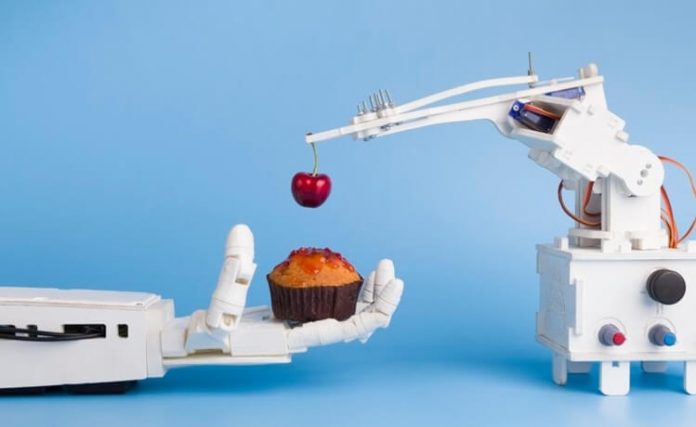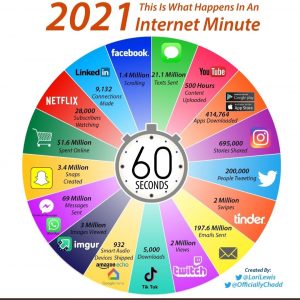This article is written by Preksha Jain pursuing Diploma in Cyber Law, FinTech Regulations, and Technology Contracts from LawSikho. The author has thrown light on the topics; the meaning of artificial intelligence and machine learning, beneficiaries of AI in the food industry, uses of AI in the food industry, and challenges of AI in the food industry.
Table of Contents
Introduction
Unknowingly, people are surrounded by AI applications today in their everyday life. Automatic spam filters in emails, automatic personal assistants like Siri on iPhone, Bixby on Samsung, voice to text feature in keyboard, social media websites already know our friends who can be tagged in images and food delivery apps like Swiggy, Zomato already know customers’ preferences. Smartphones and the increase in internet usage have led to the emergence of the food tech sector. A decade ago, there were not many social media websites and search engines to collect data for AI applications. A report on IBM marketing cloud, ‘10 Key Marketing Trends For 2017’ stated that 90% of the world’s data has been created in the last two years alone. Moreover, the emergence of cloud platforms has led to easy storage of big amounts of data. With the help of internet data and cloud platforms, the food tech sector is growing at a rapid pace in India.
Meaning of artificial intelligence and machine learning
AI refers to the ability of computers or machines to mimic human-like behaviour like learning from experience, object recognition, understanding and responding to language, making decisions and solving problems just like humans perform. AI is the science of creating machines to perform functions that require human intelligence. It is a tool that enables humans to do their jobs with utmost efficiency. The conditions required for considering whether a machine has human intelligence was discussed in Alan Turing’s article called ‘Computing Machinery and Intelligence’ which is also known as the Turing Test. During the test, if an observer cannot differentiate a machine from a human then the machine is considered to have human intelligence. Artificial Intelligence is a broad concept and machine learning is its subset. Arthur Lee Samuels, an IBM researcher developed a self-learning program for playing checkers which is one of the earliest machine learning programs. In 1959, he coined the term machine learning and explained it in the IBM Journal of Research and Development.
For example; Automated Personal Assistant like Siri on iPhone, chatbots on every website, transcribe i.e., voice to text feature on google keyboard, and so on.
Machine learning is a form of AI that enables a machine to learn and train itself based on data ingested into it to perform an intended task. It adapts itself using new sets of data to predict human behaviour and preferences. Machine learning works on a machine learning model which is created using a step by step process explained below:
-
Identify relevant data
Identifying relevant data is very crucial for the creation of accurate machine learning models. The size, accuracy, and relevancy of data are important factors for a successful ML model. You put “garbage in and get garbage out”, so the expected quality of the output depends on the input. There are various modes of securing data such as weblog data ( Apps and servers capture all kinds of data of user’s activity), GPS data (location of the user gets stored, when a person visits a place the GPS tracks down his location and ask the person about the review of that place like; How was XYZ place?), social media data, mobile data (texts, pictures videos stored in a mobile, so whenever an app is installed it asks for user’s permission to get access to gallery and texts which then gets stored in the app) and so on.
-
Using suitable algorithm
Algorithms are a set of instructions given for interpreting, manipulating, and transforming data. Generally, data is in words that are then converted into computer languages like Java or python to make an appropriate algorithm. These algorithms are then used to find set patterns in data which is further used for making predictions. After evaluating the success rate of algorithms, the ML model is created which is further assessed to check the validity of outputs.
For example; e-commerce websites present similar products to the product the user is interested in purchasing. These websites utilize the user’s browsing history and previous purchasing orders to predict similar products that the user might be interested in purchasing. Similarly, Netflix uses customer’s and other users’ streaming history, viewership of content, ratings to predict recommendations that are suitable for user’s interests. These are some examples of ML which are used to understand consumer behaviour and make predictions focusing on personalized experience to customers thereby facilitating the formulation of successful business strategies.
Beneficiaries of AI in the food industry
There are very few business organizations that are aware of AI or ML technology and how their business objectives can be optimally achieved using AI or ML. Most of the business organizations are either aware of AI/ML but don’t know how to use it for their business or business organizations are not even aware of AI/ML applications to their business. This article will help the readers in understanding the applications of AI/ML and how they can derive benefit from it. Firstly, it is important to identify the players in the food industry who can benefit from AI/ML. These include but are not limited to food processing, food distribution, catering, grocery market, food safety, and food techs.
Use of AI in the food industry
The concept of food has evolved over time and now it is not just an element of survival. In this advanced age of technology, the consumers need; a variety of flavours specially customized as per their palette, environment-friendly ingredients, healthy ingredients, compliance of food safety, no hassle in food delivery, easy to cook, and faster cooking process. For example; many on-demand online food delivery service companies allow customers to add their own ingredients, toppings and create their own dishes. It also recommends how other people mixed ingredients and created their own dish. This way the customer is engaged in the cooking process and feels satisfied with consuming dishes as per their own preferences. Every business cannot accurately predict what the consumers want as their taste and preferences keep on changing and that’s how AI comes to the rescue and help in product development, minimum food wastage, optimize supply chain management, cloud kitchens, and efficient food delivery.
-
Product development
Consumer Packaged Goods (CPG) like cold drinks, chips, chocolates have a high risk of failure due to dynamic consumer tastes and preferences. Before launching a new CPG, most companies hire agencies or in-house services for coming up with a concept of product and consumer need analysis. Traditional methods of determining consumer needs in the market are sampling the prototype product, survey and feedback on packaging, flavour, brand name within 100-200 customers which usually take a year to complete. By the time the agency presents the whole strategy for the product it has already gotten obsolete due to fast-changing consumer demands and preferences. That’s why most newly launched CPGs fail and cease to exist within 1 year of their launch.
The reason behind it is traditional methods of consumer need analysis are not sufficient and increasing competition from direct-to-consumer start-ups who have direct access to consumer needs. Large companies acquire AI start-ups to remain in the competitive market. For example; Unilever has started a new program called Unilever Foundry which helps start-ups to link up with its 400 plus brands. Since its launch in 2014, Unilever Foundry has launched 150 pilot projects with AI start-ups in a number of verticals like Knorr, a food and beverage brand of Unilever partnered with Digital Genius, an AI start-up of UK to reach target customers of South Africa who don’t have smartphones or computers and help them decide what to cook. AI chat service allows customers to text from their basic phones, know ingredients they have in hand at home and get advice on what to cook.
AI/ML technology helps in the trend mapping of a product by gathering tons of data of consumers from social media websites, search engines, recipe or review websites, and retail websites.
With these tons of data, AI technology interprets what consumers are talking among themselves about new food, new dining space, what kind of food consumers are searching for, what kind of products consumers are buying, recipes and ingredients in demand, and so on. Without human intervention, businesses can analyse and understand what consumers want in the market.
The AI technology that makes this happen is Natural Language Processing and computer vision. Natural Language Processing (NLP) is a part of AI which enables computers to understand and interpret languages the way humans do. The NLP model can be trained to understand languages used in a particular territory to understand what the customers are talking about. This model can also be trained to do sentiment analysis like what emojis are shared by customers while reviewing a product to understand how they feel about a product. Computer vision is another field of AI that enables computers to see, identify and process images in the same way that human vision does and provides a particular output. Using computer vision technology, the computer can analyse the age, gender of customers consuming a food product and the occasion on which that product is utilized.
Spoonshot is an AI company based in Bengaluru, India which delivers food & beverage insights into the real future of food through emerging trends and consumer market needs which enables businesses to exploit innovation opportunities.
AI Palette is another Singapore-based AI company that uses ML and big data analytics to help Fast Moving Consumer Goods (FMCG) companies launch products based on predictive analyses and consumer preferences.
-
Optimize supply chain management
The food supply chain consists of farmers, wholesalers, retailers, and food processors. With the help of AI/ML technology, the quality of fresh produce can be digitally graded as it moves along the supply chain to reduce manual labour effort per day, lower customer rejection rates, and reduce food loss.
Intello Labs, Gurugram based food tech company which uses AI, ML and computer vision techniques to solve food wastage problem by digitizing the quality assessment process of fresh fruits and vegetables that move along the supply chain. The farmers don’t get fair prices for their produce so Intello track app can help them to get an estimated value of their products based on their quality. The farmers just have to click a picture through their smartphone camera and upload it on Intello track app, the app will list down the quality assessment of the product whether it is ripe, undamaged and comply with quality standards and also provide an estimated price of such products. Likewise, the wholesalers, retailers, and food processors don’t have to spend time on manual sorting of quality goods and do it effectively as well as efficiently with the help of this app.
Similar AI-based sorting machines are Norway-based TOMRA and Japan-based Kewpie Corporation which sorts poor quality fruits and vegetables from good quality ones. Such technologies have helped food processing companies to increase their revenue and yield high-quality products.
Food safety is another requirement that food processing companies have to legally comply with. It is crucial to ensure that the workforce maintains healthy personal hygiene to achieve food safety goals. KanKan, a technology company that provides AI-based solutions to improve the personal hygiene of food workers in China. Cameras are employed at restaurants and manufacturing facilities that use facial recognition and object recognition software to identify workers not wearing hats and masks while preparing food. If it finds a violation, it captures screen images for further review.
-
Innovation of food recipe & cloud kitchens
Traditionally, a food recipe is a process of both art and science. It is an art because it requires culinary experience and understanding of the taste buds of the target audience. It is a science because it requires quantitative analysis of ingredient pairings. But with the help of AI and ML, a new food recipe can be created based on big data analysis. Chefs can take help from AI and ML to come up with personalized menus using demanding food ingredients and create a fusion of dishes as per consumer preferences. AI-driven food pairing takes into consideration various factors like existing or emerging food habits in the targeted demography, existing use of ingredients in food recipes by the targeted audience, and identifying new emerging ingredients mentioned in texts, social media activities, and search engines.
Givaudan, a Swiss manufacturer of flavours, has launched an in-house AI tool to innovate new recipes and reduce the time taken in hit and trial models of recipe creation. Another Chilean alternative protein company called NotCo uses an AI platform to go through public datasets and its own data sets and discover plant-based ingredients that can imitate the taste, texture, and smell of meat and dairy products. This company produces milk, mayonnaise, burgers, and ice cream through plant-based ingredients.
Virtual kitchens or cloud kitchens will pave the way in redefining the food tech industry. These kitchens only take online orders and don’t offer dine-in service. Such kitchens target those customers who want dine-in experience at their own homes. Cloud kitchens are competitors to full-service restaurants as they cut down dine-in service expenses and also offer convenience to the customers.
Robot theme restaurants are also coming up to offer automated food dine-in service to the customers. A robot theme restaurant is located in Chennai which offers a unique dine-in service to the consumers. The customers can place their orders through an iPhone placed at every table which is sent to the kitchen directly. After the order is ready, it is delivered by robot waiters at the respective tables. The founder of this restaurant believes that “hotel business is no longer just about food but it is the experience that matters”.
-
Efficient food delivery service
When it comes to food delivery services, Zomato and Swiggy are two giant food tech companies operating in India. Both these companies use ML models to offer personalized lists of restaurants according to customers’ own taste preferences by analysing the data accumulated from past food orders, location, ingredients in demand, ratings of restaurants, and so on. These companies also give feedback of customers to the restaurants and make them understand the user’s taste preferences, quality, and quantity of food demanded by the customer. Zomato uses automated chatbots for customer service and feedback. These companies have huge competition from emerging food tech start-ups offering better on-demand delivery services through updated AI and ML systems. Swiggy recently acquired AI-based on-demand delivery startup Kint.io to improve discovery for consumers and enable faster efficient delivery services.
Gulpie, has its offices located in Bengaluru and San Francisco which uses powerful AI tools to rate and pick restaurants that suit a user’s diet, taste, and health preference. It is a personal food assistant that picks restaurants based on the user’s diet, taste, and health concerns like diabetes, allergies, and vegan preferences.
Hungerbox, a B2B food tech start-up that has started a 100% digitised online cafeteria for corporate employees who prefer to order home-cooked food rather than ordering food from restaurants every day. The company has partnered with corporate clients like Microsoft, Accenture, ABB, Amazon, and many others. It has launched a company-specific app that lists down menus of each vendor and employees can select a vendor and order dishes as per their own taste preferences.
Presently, the on-demand delivery service relies on human delivery executives. But in the future drones and automated vehicles might be used for food delivery services. Several companies are testing its feasibility and have introduced it in select regions. Recently, Uber has received permission from the Federal Aviation Administration of the United States department of transportation to test drone delivery in San Diego, California. UberEats partner McDonalds is implementing the drone delivery service in this area. Domino’s pizza is also testing self-driven vehicles for pizza delivery in Houston. Although it might seem far-fetched for human imagination, technology is growing at a fast pace and in no time we will enter a new world where every sci-fi movie comes to life.
Challenges of AI in the food industry
The challenges faced by artificial intelligence in the food industry are:
- Generally, people misconceive the idea of AI as a tool that will replace humans in the future. This misconception is due to unawareness among people about the features of AI so they are scared of the unknown and make their own assumptions of AI replacing humans in their jobs.
- The companies don’t understand why and how AI models should be adopted to achieve their objectives.
- In the initial phase of adopting an AI model, companies face the pain points of identifying relevant data and feeding the right data to the algorithm in order to get the expected output.
- AI adaptation from top-level management to lower-level management is very hard as it requires extensive personnel training to work with AI models.
- AI models are expensive and not every company can afford it.
- The natural language processing model needs to be trained efficiently to interpret and analyse data in different languages. Still, the NLP model cannot interpret unstructured data present on social media websites or search engines where people use different expressions to write their views like sarcasm, funny attributes so the NLP model might not be able to accurately understand what humans intend to express.
Conclusion
The author is of the opinion that despite these challenges, the benefits of AI technology like better customer reach, easy innovation of products, direct access to customer needs and feedback, competitive edge through innovative products, and many more such benefits cannot be ignored in the food industry. Every revolution needs a change in people’s mindsets for a smooth and successful transition. People should think of AI as their friend who can help them do their jobs effectively and efficiently. The companies need to take advice from tech companies as to how and why AI can be adopted to achieve its objectives. The pain point of identifying relevant data and feeding the right data to the AI Model is an initial hurdle of adapting AI which can be resolved by providing high-quality data, changing algorithms, and training it until the desired output gets generated. The management should think of AI as a new way of doing business and should have clarity as to how their business problem can be solved through implementing the AI model. AI and ML technology has accomplished enough in the food industry but still, it has a long way to go in becoming an inevitable part of it.
Students of Lawsikho courses regularly produce writing assignments and work on practical exercises as a part of their coursework and develop themselves in real-life practical skill.
LawSikho has created a telegram group for exchanging legal knowledge, referrals and various opportunities. You can click on this link and join:
 Serato DJ Crack 2025Serato DJ PRO Crack
Serato DJ Crack 2025Serato DJ PRO Crack












 Allow notifications
Allow notifications



